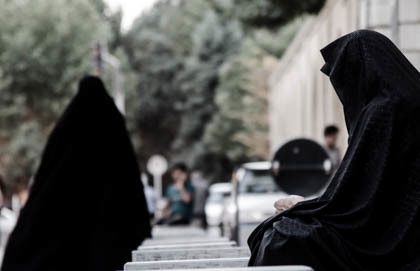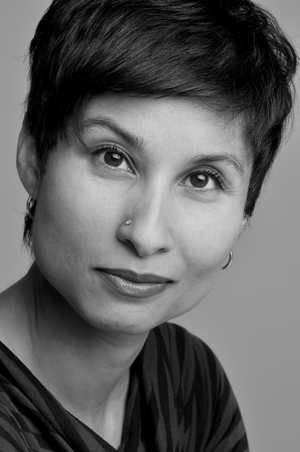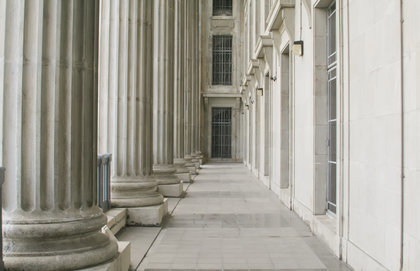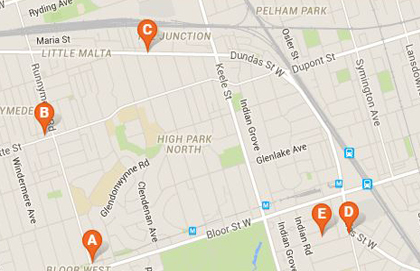The Western world is at an astonishing historical moment when, in the 21st century, women's clothes are the subject of legislation, judicial consideration and much public reprobation. I am referring, in particular, to the situation of Muslim women who wear the niqab, or the full-face veil, and the growing agitation that has been expressed about them publicly.
There are a variety of reasons offered in support of the belief that women should not be permitted to wear the niqab in certain venues. They include that the niqab oppresses women, prevents integration, offends secularism and tolerance, decreases security and communication, is impolite, encourages proselytism, and is not a religious requirement. These explanations for why certain public displays of religiosity ought to be banned reveal more about niqab objectors' illogical, bias-laden and viscerally negative reactions than about any legitimate concerns raised by the wearing of the niqab.
The niqab cannot be understood as a symbol with singular meaning. A new report from Ontario, produced by the Canadian Council of Muslim Women, based on interviews with niqab-wearing women, finds that the reasons for wearing the niqab are highly personal and diverse. Contrary to the prevailing view that male family members force women into this attire, the study suggests that many women, in fact, faced familial opposition to their personal decision to wear the niqab. The report puts into question the contention that we must rescue niqab-wearing women from oppression.
In fact, the decision to wear the niqab, or indeed any clothing, is likely a strategic choice made in already constrained relational environments, whose costs and benefits vary depending on the circumstances. Instead of being unilateral instruments of submission or "free" expression, the "preference" to wear the niqab is shaped by multiple interactions and regulation.
My research has shown that niqab-wearing women are not the submissive women society believes them to be. They are, in fact, acting as advocates in courts of law, teaching in schools, pursuing higher education, litigating their rights in courtrooms and interacting with male cabinet ministers about issues of concern to them. The niqab is a critical component of who they are. To deny them access to fundamental legal institutions on the basis of their identity is to deny their dignity.
People often describe how uncomfortable the niqab makes them feel. I would suggest that comfort is an ineffective measure for interactions in a diverse society. Nonetheless, it might be useful to consider what it is that makes us so uncomfortable. It may simply be fear of the unknown or fear of that to which we have ascribed ideas of radicalism and terrorism. Fear, like discomfort, is a bad adviser. Katherine Bullock has suggested that our discomfort is about the interruption of the "gaze." With the niqab-wearing woman, she sees us, but we do not see her. Thus, she subverts the typical power relations in that she sees but is not seen.
Another explanation is the origins of the dominant Western scopic regime, in which vision is central to the fact of marking Christ as the observable, earthly image of God. Valérie Behiery argues that the Christian West's foundational ocular centrism has led to secularism. Whatever the reason for our dislike of the niqab — and there may be others — in order to live peacefully in a diverse democracy, we need to develop empathy that enables us to see the world from the point of view of others.
I will concentrate on Canadian prohibitions of, or attempts at prohibiting, the niqab. These debates are, of course, also happening with vigour in parts of Europe, the United Kingdom and the United States. But, amazingly, we in Canada have had four incidents in which niqab-wearing women feature prominently.
No. 1: Veiled Voting
Identification arguments play a key role in demands to ban the niqab in public spaces. Veiled-voting became an issue in Canada when the federal government introduced An Act to amend the Canada Elections Act (visual identification of voters). The bill, which was introduced by the Conservative government in 2007, required voters to have their faces uncovered to enable election officials to identify them visually, even though there would be no means of making a visual comparison of the voter's face with a photograph given that people can submit two pieces of non-photo ID in order to vote. Indeed, voting by mail is also permissible under the Canada Elections Act. The insistence on seeing someone's face defies logic. The bill, which died when Parliament was prorogued, purported to be an attempt to prevent voter fraud even though there is little evidence that voter fraud is even a problem in Canada. It was really an attempt to counter the problem of the mythical "multiple-voting, veiled Muslim woman." As one Globe and Mail editorial noted, showing one's face would only prove that the voter has a face.
The question that arises when unfounded and unexamined objections to the niqab are raised is whether such restrictions of attire are actually a subterfuge for discrimination. In the veiled-voting incident, identification was obviously not the real concern.
No. 2: Citizenship Ceremonies
In December 2011, in a unilateral move by Citizenship and Immigration Minister Jason Kenney, face veils were banned during Canadian citizenship ceremonies. Minister Kenney was able to make this move without any consultations because the changes were made to regulations under the Citizenship Act.
The reason for the change was that some members of Parliament and citizenship judges had complained that it was "hard to tell whether people with their faces covered are actually reciting the oath of citizenship," which is a requirement under the Act. So, women who have overcome all of the concrete hurdles to Canadian citizenship, which are by no means minimal, are to be denied this coveted privilege because of complaints from some that they are not engaging in the symbolic act of declaring one's Canadian-ness. Niqab-wearing women, it seems, cannot be trusted to pronounce the words of the oath — we need to actually see their mouths moving.
Minister Kenney also said the following in his explanation for the new regulation: "Allowing a group to hide their faces while they are becoming members of our community is counter to Canada's commitment to openness, equality and social cohesion." His comments disclose a very particular and polarized construction of "us" as insiders and "them" as outsiders.
Sara Ahmed, a professor of race and cultural studies, examines the figure of "the stranger" in multicultural discourse in Australia. She suggests that the nation requires strangers in order to exist, to set the limits of the nation. She argues that multiculturalism may seek to differentiate between those strangers whose difference can be claimed by the nation and those "stranger strangers" whose difference may be dangerous to the well-being of even the most heterogeneous of nations. Muslim women who wear the niqab represent "stranger strangers." While some outward appearances of difference can be assimilated so long as the person is "the same underneath," the dress of some strangers, niqab-wearing women in particular, is the outward representation that the stranger refuses to be "native underneath."
No. 3: Niqabs in the Courts
In R. v. N.S., the Supreme Court of Canada examined whether a sexual assault complainant could wear her niqab while testifying in court. N.S. is a devout Muslim woman from Toronto who has worn the niqab for over eight years. She alleged that two male relatives sexually assaulted her over a period of several years. The lawyers for the accused objected to the complainant wearing her niqab.
They argued that in order to effectively crossexamine the complainant, they needed to be able to see her face to gauge her reactions to their questions. They also argued that the trier of fact would have difficulty making credibility assessments unless able to see her face. Judges and juries are permitted in law to assess the credibility of witnesses and the accused based on demeanour evidence. That means they are permitted to evaluate the trustworthiness of a person in court based on their appearance, attitude and/or disposition. Although much case law exists to support this contention in Canada, there is also a growing body of case law and social science literature that warns judges about the excessive use of demeanour evidence because of its inherent unreliability.
It is very common for individuals to believe that they can determine when they are being lied to. However, psychologist Paul Ekman, in a study of lying, found that with rare exceptions, "no one can do better than chance at spotting liars simply by their demeanour." In racial profiling, perfectly innocuous behaviour is often interpreted as suspicious simply because the observation occurred through stereotypical lenses.
In the sexual assault context, the concern is that demeanour evidence will result in reliance on inappropriate myths about the way women ought to react to sexual assault, penalizing those who do not fit into such rigid characterizations. It is a woman's words that matter, not her body or how she looks or what she's wearing.
The N.S. case challenged a foundational premise of our legal system: that those who see the witness are at the greatest advantage. The social science evidence suggests strongly this is not the case. The question was whether the Supreme Court would be wiling to overhaul our system accordingly.
The majority decision does not prohibit niqabwearing women from courtrooms outright. Instead, it provides trial courts with an analytical framework to structure their reasoning, but it is one that skews the balance in favour of banning the niqab more often than not. The Court has said that when evidence is uncontested, the woman can wear a niqab. But in sexual assault cases, the evidence will necessarily be contested. The justices' concern is the accused's right to a fair trial, which is of course important. But interestingly, they failed to consider their own guidance from a previous case, R. v. Mills, in which they said that what constitutes a fair trial is consideration not just of the rights of the accused but the public interest in prosecutions that are sensitive to the needs of victims and witnesses.
The effect of this judgment could be that niqabwearing Muslim women will be less likely to report sexual assault, an already under-reported crime, thus renewing rape myths about the way sexual assault complainants ought to appear. The decision further marginalizes an already stigmatized group and tells them that justice will not be done for them.
No. 4: Niqabs and Public Service
Until recently, Quebec was embroiled in a debate about its Charter of Values (Bill 60). This bill proposed to amend the Quebec Charter of Human Rights and Freedoms by, among other things, making it mandatory to have one's face uncovered when either providing or receiving a State service.
Essentially, niqab-wearing women (and in fact all people who wear "conspicuous religious symbols") would have been prevented from working in government service despite their competence and training simply because of an unproven legislative assertion that they would be unable to perform their jobs neutrally or without religious bias. Niqabwearing women — and no one else — would also have been prevented from accessing governmentrun services such as child care, health care and education despite the contention that Bill 60 was in part about the equality of men and women.
We continually hear that the niqab is a symbol of women's oppression. But there is no evidence that the wearing of this religious garment is causally related to inequality between men and women. Rather, restricting public employees from wearing garments they sincerely believe to be required by their faith subverts gender equality as it could make many Muslim women more dependent on the patriarchal sectors of their communities by further estranging them from the public sphere. Education and employment are the best means by which to ensure integration and autonomy.
The State should not be in the business of telling people how to dress. The major oppression these women face is coercive and State-sanctioned attempts at removing their clothing publicly, along with discriminatory attitudes and systems that prevent them from effectively participating in all areas of society.
Although most federal political parties denounced Bill 60, it is very telling that there was little concern over the bill's predecessor, which had targeted niqab-wearing women only rather than all people who wear religious symbols. Bill 60 did not become law, but the Quebec government's backing of these discriminatory ideas legitimized and emboldened public views, and there was an increase in reports of harassment and in acts of vandalism and anti- Muslim intolerance, ranging from spitting to racial insults.
Incongruous Messages About Niqab-Wearing Women
In recognizing the seeds of intolerance against niqab-wearing women, you might want to consider the incongruous messages deployed about them. The veiled woman is both threatened and threatening. The equality of niqab-wearing women is threatened, and they are in need of rescuing from the male oppressors who force the niqab upon them. But they are also threatening in the attire that they wear to, allegedly, hide their identity publicly, defraud the electoral system, prevent a fair trial and subvert open communication with the State.
These mixed messages reinforce a concept of "us" as a secular nation equal in its relations between men and women and religiously neutral, whereas "they" are wholly religious, unequal and repressed. The nation can be inclusive of some, but the niqab-wearing woman takes things too far. She must remain "other." Indeed, these examples shore up the pervasive belief that wearing the niqab is a practice that asks too much of the rest of society. These ideas seep into mainstream consciousness and lower the bar in terms of what can appropriately and publicly be said about or to Muslims, and indeed what can be done to them.
The integration of Muslim women is articulated as a problem, but one whose cause is located not in society, with its systemic barriers to inclusion, but in Muslim women's choice to veil. It is only by considering the plight of the most marginalized that justice can be achieved.






